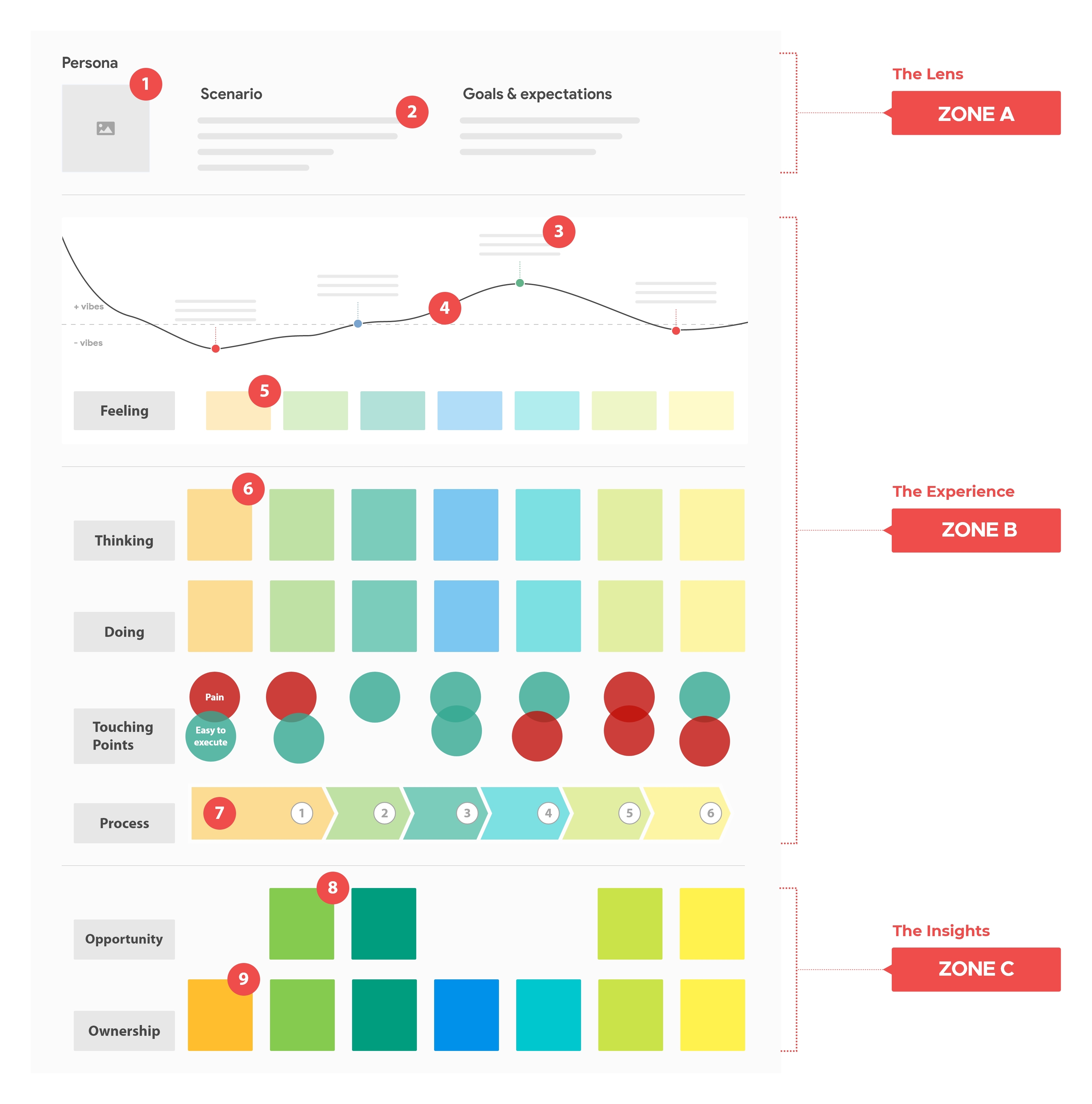
Most companies are reasonably good at gathering data on their users. But data often fails to communicate the frustrations and experiences of customers. A story can do that, and one of the best storytelling tools in business is the customer journey map.
The customer journey map is a tool to visualize the experience of interacting with your brand from the customer’s point of view. This map is critical because it forces you to look at how your customers actually experience your brand versus how you think they do.
“Journey mapping combines two powerful instruments: storytelling and visualization,” according to Kat Kaplan.
A customer journey map can take a variety of forms, but essentially, it is a visual representation of a customer’s experience with a product or company at various touchpoints over time.
Characteristics:
- It is tied to a specific service.
- It is split into 3 swim lanes:
Zone A: The lens provides constraints for the map by assigning (1) a persona (“who”) and (2) the scenario to be examined (“what”).
Zone B: The heart of the map is the visualized experience, usually aligned across (3) chunkable phases of the journey. The (4) actions, (5) thoughts, and (6) emotional experience of the user has throughout the journey can be supplemented with quotes or videos from research.
Zone C: The output should vary based on the business goal the map supports, but it could describe the insights and pain points discovered, and the (7) opportunities to focus on going forward, as well as (8) internal ownership.
- It is chronological and hierarchical:
- why use it:
- To pinpoint specific customer journey touchpoints that cause pain or delight
- To break down silos to create one shared, organization-wide understanding of the customer journey
- When to use it:
- At any point in the design process, as a reference point amongst a team throughout a product design cycle
- why use it:
The graphic is not meant to map every aspect of the customer’s experience. Rather, it should tell a simple story to focus people’s attention on the customer’s needs.
Think of the customer journey map as a poster pinned to the office wall. At a glance, people should be able to see the key touchpoints that a user passes through.





